The Science
Behind BionicGym
How and why it works:
We mimic shivering! A calorie is a unit of heat. When the body wants to warm up / burn calories it shivers. There is this resonant frequency of around 7-8Hz where the muscle fibers contract and relax optimizing energy consumption. The muscles cry out for oxygen and fuel creating a demand for blood – hence the heart rate increases and the lungs work harder.
Special electrodes allow us to target concentrated impulses. Of course there is a little bit of magic in the formula. Even though the electrodes are only on the thigh we manage to bring in the calf muscles and the gluteals (bum) muscles.
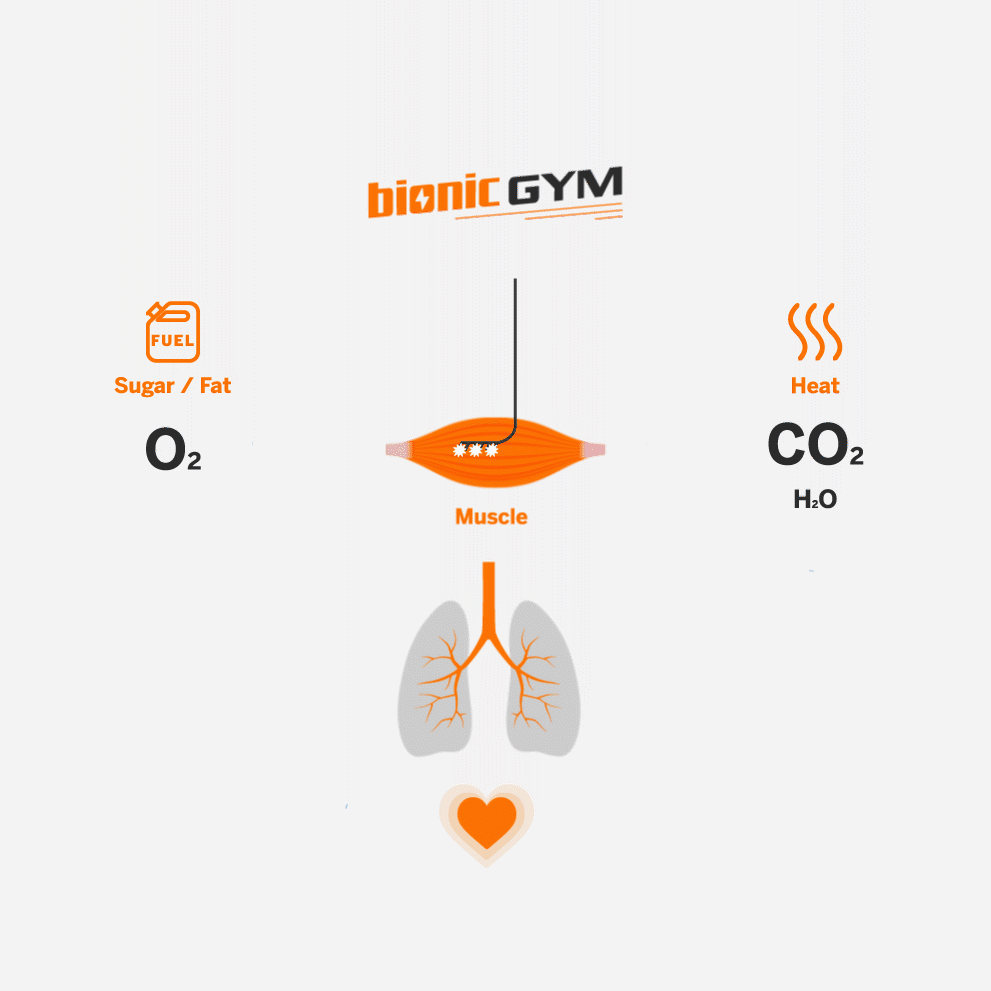
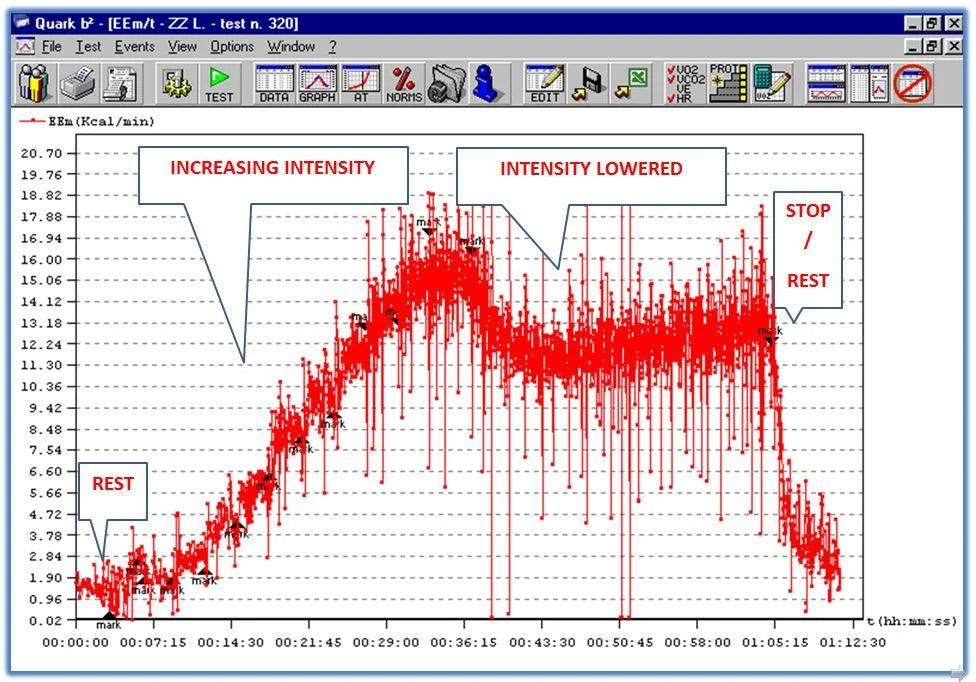
Calories burnt versus Intensity
Sitting at rest, you burn 1-2 calories per minute. At each mark (black triangle) there was an increase in the stimulation intensity. Caloric expenditure increased to 15Kcal/min – very vigorous exercise! (The American Heart Association defines ‘vigorous exercise’ as >6 METS or metabolic equivalents. This subject is exercising not just vigorously but 50% above this threshold).
Special electrodes allow us to target concentrated impulses. Of course there is a little bit of magic in the formula. Even though the electrodes are only on the thigh we manage to bring in the calf muscles and the gluteals (bum) muscles.
HR and oxygen consumption (VO2)
At rest the subjects heart rate is <60 as the stimulation intensity increases his heart rate increases – reaching his maximal rate of >185 bpm. (Also greater than his age-predicted maximal heart rate and equal to his maximal heart rate with voluntary /’normal’ exercise).
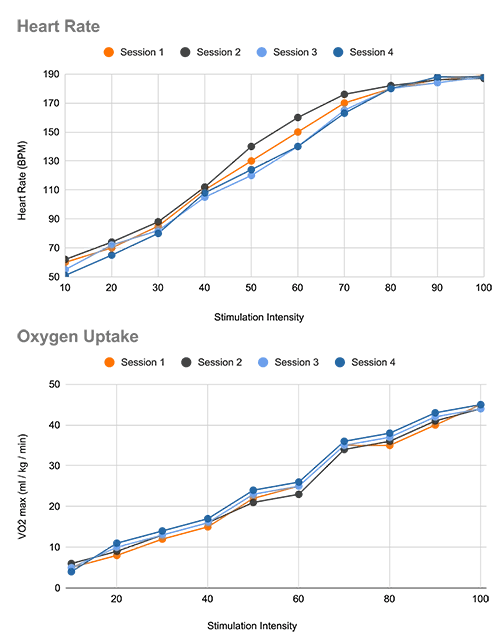
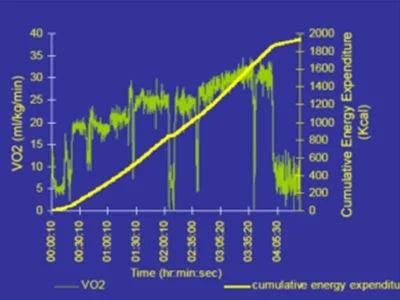
O2 uptake and calories over 4 hours
At self-selected intensities this subject watched a couple of DVDs on a reclining physio-table. Oxygen consumption and cumulative calories are plotted.
Lactate responses -2 mins supra-max
Comparison of blood lactate levels post 2 minutes supra-maximal exercise (voluntary exercise and stimulation). Note for comfort the stimulation intensity should be gradually increased.
This could not be done in this 2 minute experiment. The limiting factor is probably due to the subjects’ tolerance of the stimulation intensity within the 2 minute window rather than the physiological limit as maximal stimulation intensity was not reached.
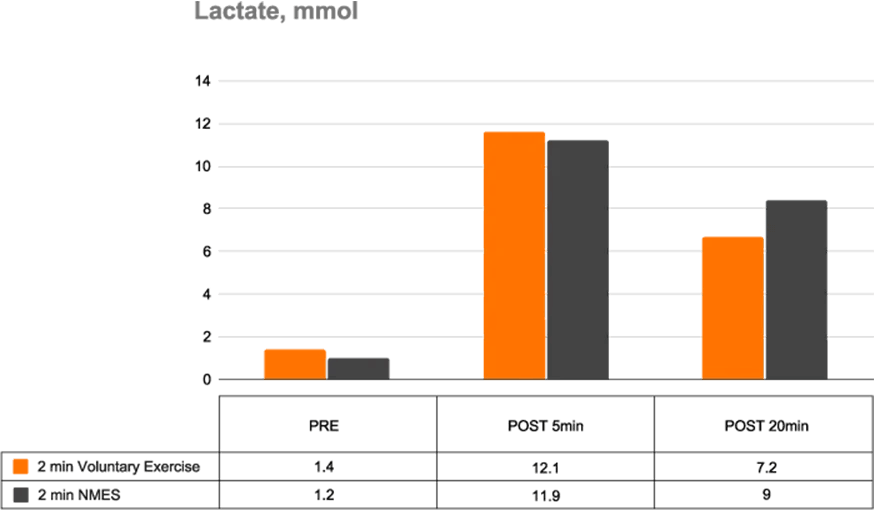
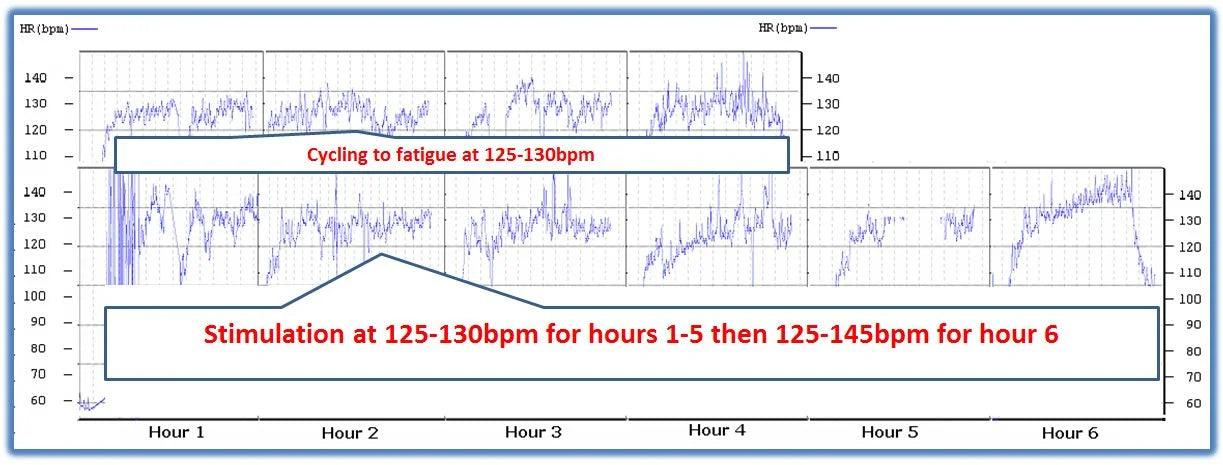
Exercise to fatigue at 125+ bpm
This experiment compares exercise-to-fatigue of stationary cycling and stimulation at a given heart rate (125-130bpm). Pedaling at 80 revolutions/min the resistance was adjusted to keep the HR at 125-130.
For stimulation the intensity was adjusted. The subject was fasting overnight each time. The energy expenditure per min was higher for cycling. Near 4 hours, with resistance at zero, the subject was unable to continue pedaling. After 6 hours of stimulation the subject could have continued.
Increases in aerobic fitness - VO2max
Controlled Study over six weeks on healthy subjects showed statistically significant increases in maximum aerobic capacity / VO2max (VO2max is the ‘gold standard’ measurement of aerobic fitness).
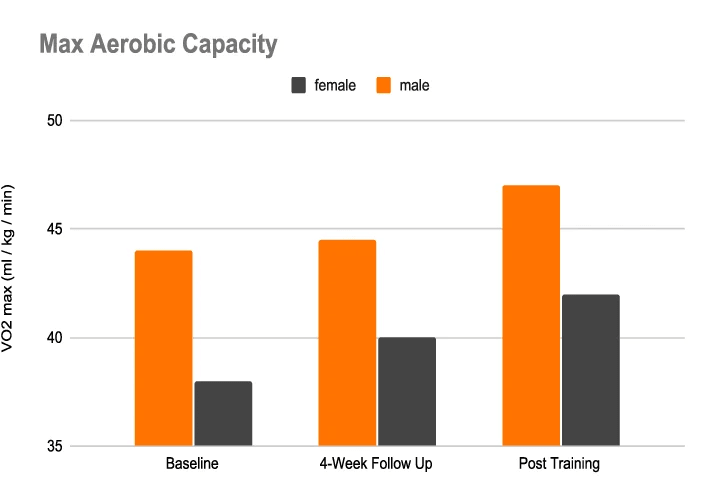
BionicGym - Your Cardio on Autopilot
Easy as 1, 2, 3

Standard
BionicGym
- Delivers Exercise on Autopilot.
- Workouts that are Gentle on Joints
- Burn Calories while you Multitask.

Unleash The Full Power of BionicGym
BionicGym + PRO-HIIT
- All the perks of BionicGym plus:
- Get intense workouts and burn more calories faster.
- Increase heart rate, sweat, improve cardio fitness.
- Includes High Intensity Interval Training (HIIT) workouts




